CI7200 Ebusiness Strategy and Implementation Assignment
Executive Summary
The following study represents business analysis of ZETA, implementation of online marketing strategy is crucial for a company to develop business nowadays. Proper business analysis tools as PESTEL Analysis has been conducted in this study to briefly describe this topic. Analysis of organizational environment and a value proposition analysis have been conducted on this study to give the reader a proper knowledge about business development methods of ZETA. A brief description of different e-commerce related software has been added in the following study to generate a clear view of the topic. Organizational transformation and a Change Management Plan have been added in the study to discuss properly about the topic. An overall management study and proper budget estimate is also added in the study for enhance the reader. The following study represents a suitable technological plan and website improvement strategy for ZETA for development of Online Marketing business method.
Part A
Introduction
Present report will include a business and environmental analysis of ZETA Communities provided in case study. Appropriate tools such as PESTLE and Porter’s five forces for business analysis will be selected and justified. A clear analysis of organisational environment will be performed along with a value proposition for selected organisation. Current report will describe suitable e-business tools required for new services mentioned in value proposition. Justifications for these proposals will be presented according to environmental analysis. A discussion regarding management issues in organisation will be carried out and a change management plan will be provided.
1. Business and Environmental Analysis
1.1 Selection and Justification of Tools
In order to perform environmental analysis of ZETA Communities, analytical tools such as PESTLE analysis and Porter’s five forces analysis will be applicable.
PESTLE analysis is an appropriate analysis to understand external environmental factors affecting business of an organisation. In PESTLE analysis, different political, economical and social factors are analysed for UK. Students will develop an understanding about other macro-environmental factors such as technological, legal and environmental factors associated with UK (Carson et al. 2018).
Porter’s five forces is another tool for external environmental analysis. Using five forces analysis proposed by Michael Porter, students could specifically focus on factors related to the industry an organisation under study belongs. In case of ZETA Communities, factors such as competitive rivalry, threats of substitution and new entrants, and bargaining power of customers and suppliers related to construction industry will be analysed.
1.2 Analysis of Organisational Environment
PESTLE Analysis
Political factors- UK is one of the most politically stable countries with a primary parliamentary democratic system. However, recent exit of UK from EU, known as Brexit movement, has created some political uncertainty in UK.
Economical factors- Estimated GDP of UK in 2019 was $ 2.744 trillion, which positions UK as sixth largest global economy. Economic inflation rate in UK is currently 1.94% with favourable corporate taxation rates of 19% has attracted foreign direct investments (FDI) in the country. Low unemployment rate of 3.8% is favourable for business expansion in UK.
Social factors- Having an increasing population and a constantly developing education system, UK is an ideal target market for business expansion of ZETA Communities. Citizens have access to advanced healthcare systems and improved lifestyles due to high incomes.
Technological factors- UK have some of the world’s leading institutes of research and technological development. As stated by Cuc and Miina (2018), a fluent economy of UK provides greater access to new technologies to its citizens and business operations.
Legal factors- In order to do business in UK, ZETA will have to follow Employment Act, 1996 regarding minimum wages, working hours and rights of labours. Equality Act, 2010 that protects UK citizens from discriminations based on gender, ethnicity or cultural background, must be followed (Legislations of UK, 2020).
Environmental factors- ZETA should be attentive towards managing its waste materials in an environment friendly manner to minimise pollutions. Control of Pollution Act, 1974 regarding protection of environmental integrity and ecosystem of UK must be followed (Environmental Laws, 2020).
Porter’s Five Forces
Bargaining power of Customers- Bargaining power of customers is high for construction industry due to certain processes such as tender and bidding.
Bargaining power of Suppliers- Suppliers have low bargaining power in construction industry considering availability of a large number of suppliers to companies (Horkoff et al. 2014).
Competitive rivalry- Recent economic downturn has resulted in decreased capital investments in public sectors like construction. For this, competitive rivalry between ZETA with companies like Pulte/Centex, Living homes and Project Frog in this industry is high.
Threat of new entrants- New entry in construction industry requires large investments and infrastructures. Therefore, threats posed by new entrants are low.
Threat of Substitution- Despite high competitive rivalry, reliable construction companies are low in number, which makes threat of substitution a moderate force.
1.3 Value Proposition
A value proposition matrix has been designed for e-business transformation of ZETA communities considering the various value additions from the perspective of both company and customers. Company gains flexible tender management, reduction of time management complexity and cheaper marketing campaigns from its e-business venture. Application of various applications and software will improve construction plans, customer relations and coordination with suppliers for the company. Painkillers of interactive customer care and fast payment processing (Fill and Fill, 2018) will mend untimely deliveries and poor services that cause pains to customers.
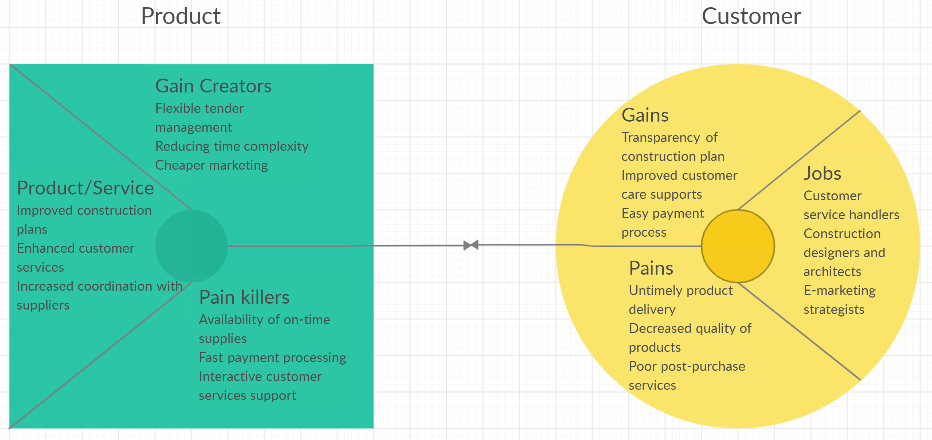
Figure 1: Value Proposition matrix for ZETA e-business
(Source: Learner)
Customers will gain significant advantages with help of transparency of construction plan and easy payment procedures. E-business ventures will create jobs such as customer service handlers, architects and construction designers. E-marketing strategists and professionals proficient in handling e-transactions will be among other jobs created in e-business venture of ZETA.
2. Identification and Suggestion for Improvement
2.1 Description of E-Business Tools
E-commerce Platforms
In order to enter into e-business for any industry, it is essential to select appropriate e-commerce platforms to carry out businesses. Platforms such as Shopify and Woocommerce are loaded with tools and services required for operating and managing business efficiently (Grover et al. 2018). Gates is a multi-purpose website of Shopify designed specifically for construction industry. Handyman developed by Clevresoft can be used by ZETA as its e-commerce platform to organise business components.
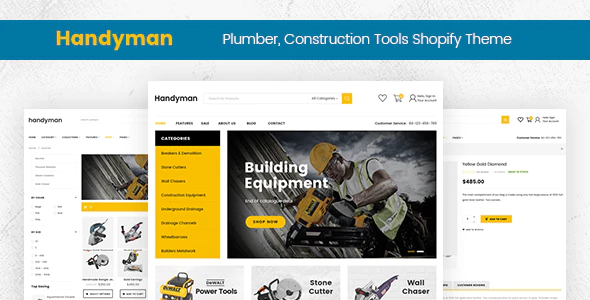
Figure 2: Handyman by Cleversoft
(Source: Kim et al. 2018)
Construction Management Software
Construction software and tools such as Procore and Concept3D will be useful for e-business developments related to construction industry. Procore combines financial details, project management, safety controls and quality assessments in one application (Kim et al. 2018). Using Concept3D, a virtual mapping of construction site can be done using MapSpacer app included in it. ZETA can implement this software to provide customers with interactive maps of locations and buildings along with detailed outlines for specific construction projects.
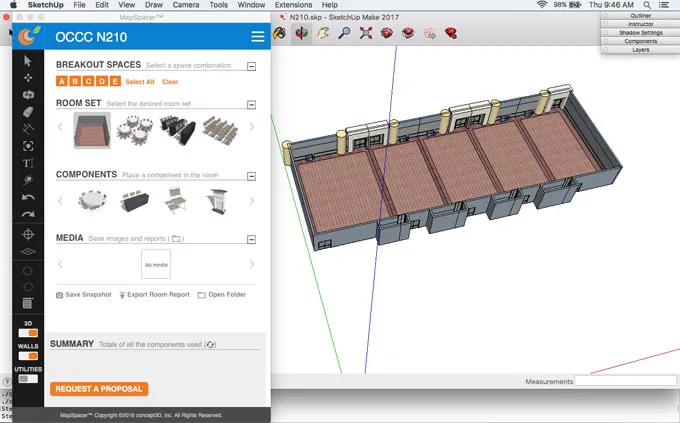
Figure 3: MapSpaccer Application for Zeta
(Source: Ogbari et al. 2018)
E-payment Processing Systems
An important part of transforming a company business into an e-business proposition is creating portals for handling online purchases. ZETA can create its own payment portal or utilise existing third party payment portals such as PayPal, Stripe in this regard. According to Ogbari et al. (2018), payment-processing systems can be directly integrated into e-commerce platforms to increase convenience of customers. Electronic Fund Transfer (EFT) can be utilised by ZETA for handling important payments common for construction businesses for transferring large sums of money.

Figure 4: PayPal application
(Source: Paja et al. 2016)
Electronic Transaction Portals
Applications such as WebInvoice or WebPO is implemented which will allow suppliers to submit their invoice through websites of ZETA. It is recommended that these applications help in saving time and facilitates on-time payment processing. Integration applications such as ePO or eInvoice will enhance system-to-system transactions between company and suppliers (Paja et al. 2016). Elimination of paperwork and delays in shipments and deliveries of materials will be benefits of these systems.
E-marketing Platforms
For expanding business into electronic platforms, development of e marketing is recommended. Specific strategies and tools can be applied for promoting products of a company over online media. E-marketing using promotional mailings can be applied by ZETA using applications such as MailChimp to grow its customer coordination (Rajnoha et al. 2016). Using social media platforms such as Facebook and Twitter, ZETA can carry out e-marketing campaigns. Applying social media automation tools such as HootSuite, ZETA can manage its social media campaigning effectively in one easily manageable platform.
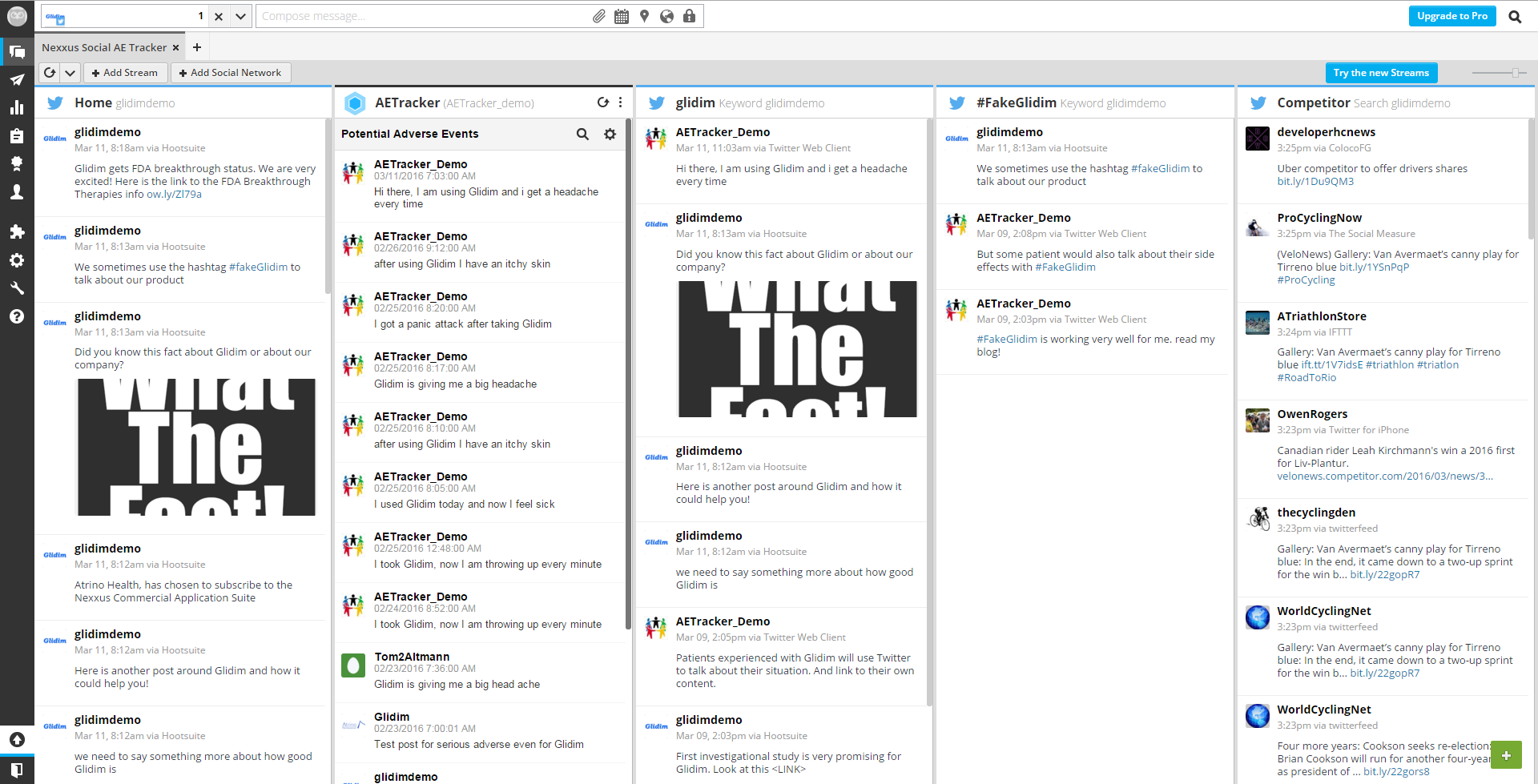
Figure 5: Hootsuite Application Usage
(Source: Schmidtova and Formanek, 2019)
Customer Relationship Management Application
Monitoring and ensuring customer satisfaction is an integral part of developing an e-business. For managing customer-company relationships, application of customer relationship management (CRM) software has become increasingly popular. As cited by Schmidtova and Formanek (2019), tools such as ZenDesk track customer experiences by utilising interactive customer interfaces. HubSpot and SharpSpring are useful marketing automation tools containing built-in CRM systems that can be implemented by ZETA communities for managing its customer relations.
2.2 Justification of Proposals
- E-commerce platforms like Gates and Handyman, specifically designed for construction industry will increase efficiency of ZETA by reducing time complexity and enhancing availability of on-time supplies. Implementation of e-commerce platforms will cost about £119.
- Construction management software will be effective for increasing transparency of construction plans (Straková et al. 2018). Efficiency and competitive advantage of ZETA will increase by allowing the company to manage details of its specific projects using tools such as Procore that will cost about £ 130.
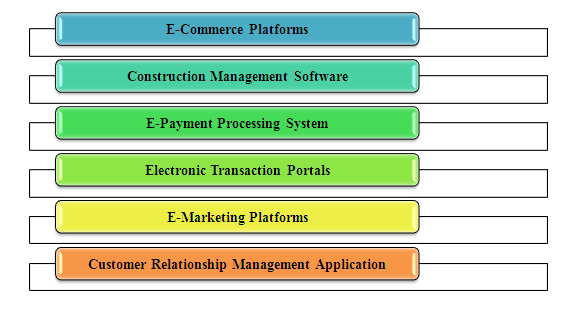
Figure 6: Recommended Systems
(Source: Learner)
- Creating e-payment portals that have user-friendly interfaces will reduce pains of customers regarding complexities and time lags associated with payment processing. EFT services and web invoices will cost ZETA approximately £125 and will be gainful for the company.
- Developing e-marketing platforms and application of online campaigns will be added gain for creators due to their lower costs of about £500-600 annually. Online advertisements can be easily viewed by customers and modified by creators on demand, which will give competitive advantage to ZETA (Yan et al. 2019)
- Customer relationship management applications and interfaces can be huge painkillers for customers of ZETA by providing them with enhanced customer care. Post-purchase services will improve by implementing software like ZenDesk resulting in value addition to its products. As cited by Möller et al. (2016), these applications may require annual subscriptions costing up to £500 per year.
3. Assessment of Organisational Transformation
3.1 Discussion of Transformation
Digital transformation of a business is primarily technically challenging a company to achieve. However, a company in its e-business adaptation can encounter management issues and difficulties in organisational structure. In order to optimize e-business, ZETA should implement specific changes in its organisational structure (Jayatilleke and Lai, 2018).
Create a sharing culture
Companies should create an open culture of sharing experiences among its employees to enhance its e-business venture. A digital transformation comes with application of new technologies and employees are likely to face various problems in familiarizing with changed working procedures. In this context, sharing of ideas and problems and trying to find solutions together makes the process of digital transformation more easy going. In digital age, company performance is controlled by collective performance and coordination of employees (Schmidt et al. 2017). Thus, enhanced communication and employee empowerment will provide employees with a free work environment and benefit ZETA as a company.
Develop suitable mindset
Change in organisational procedures as well as management structure can be met with opposition and reluctance from company employees. ZETA should promote a curious and accepting mindset among its workers regarding e-business transformation. Digital transformation is associated with application and usage of new technology. A primarily curious attitude of employees towards impending change and new technological advancements in the company will facilitate implementation of required software and applications for ZETA’s e-business venture.
Promote Information-oriented culture
In order to complete digital transformations, ZETA should incorporate development of an information-oriented organisational culture with increased availability of information. Digitalisation opposes monopolising control of management over information and by making information available to employees of all levels; a company will create a more open environment. Attempts of providing information should go beyond internal organisational structure and include customers and suppliers of a company. Increased flow of information enhances transparency of company transactions, which is a key benefit of digitalisation (Akbar et al. 2018).
Balancing new ways with old ones
Another significant management issue faced by companies in e-business transformation is finding balance between implementation of new procedures with pre-existing methods. Completely changing a well-established procedure can be challenging to achieve and can compromise product qualities as a result. ZETA should identify business sectors that will benefit from primary digitalisation and analyse specific strategies for these transformations. According to Kamthania et al. (2018), some sectors such as building capabilities to develop designs using software and applications may require certain time to be performed efficiently.
3.2 Change Management Plan
A successful plan for implementing organisational change can be developed by using Lewin’s change management model as a template.
Unfreeze stage
First stage of change management plan is unfreezing of pre-existing organisational structure. It is a priming process that prepares employees for accepting impending change. ZETA can undertake a Current State Assessment (CSA) of organisation to identify sectors that require change (Aktymbayeva et al. 2018). Next, stakeholder analysis should be performed to understand tendencies of various company stakeholders. A communication plan needs to be developed by ZETA authorities for conveying correct information to concerned people such as company employees and stakeholders.
Change Stage
In transition or change stage, ZETA will implement specific changes for e-business such as adoption of construction management software, epayment processing portals and e-marketing campaigning. Organisational structure changes such as developing a sharing culture and promoting free information will be implemented in the company in this stage.
Refreeze Stage
Refreezing is essential for making the recent changes permanent in a company. By Refreezing, ZETA will ensure that company business is carried out in new ways and do not revert to pre-existing ones.
Conclusion
Present report has conducted environmental analysis of ZETA communities using PESTLE and Porter’s five forces analysis. A value proposition of e-business venture of ZETA has been developed. Specific tools have been suggested for e-business transformation along with justifications. Required changes in organisational management have been identified and a change management plan has been developed (Tamilarasi and Elamathi, 2017).
Part B Design Exercise and Justification
1. Critical Discussion on E-Business Trends
ZETA must focus on different E-Business Trends to improve its business aspects and business domains such as Implementation of Artificial Intelligence, Mobile Commerce, Market Automation, Contextual, and Program Focused Advertisements and Chatbot.
- Implementation of AI: Identification of customers’ browsing history is one of the major challenges for ZETA. Implementation of personalized strategies will be helpful for the company to increase revenue from 6% to 10% annually. AI will help to improve data accuracy for ZETA and enhance e-commerce to store huge amounts of information (Soni, 2020).
- Mobile Commerce: ZETA is intended to improve its mobile transactions every year. The company must focus on consumer needs to improve business aspects. A responsive user interface approach for this subject will be more suitable for ZETA (Park et al. 2016).
- Market Automation: This could be a proper solution for ZETA and nowadays it is one of the major market trends. Above method will be helpful to customize Landing Pages for consumers and easy access to shopping carts. Sending tailor emails to the customers will be more preferable for ZETA to enhance this process.
- Contextual and Program Focused Advertisements: Product based advertisements will be more suitable for ZETA to increase E-Business Trends. Using Datasets of consumer information will be helpful to choose the right target audience (Rosni et al. 2016).
2. Management Summary
Implementation of Chatbot will increase customer interaction of ZETA. Chatbot is a cheap and smarter strategy for online business development. According to Wibowo et al. (2020), growth of Chatbot will increase by 60% by 2024 for ZETA. An AI-Powered Chatbot will be more preferable for the company to collect and store consumer data and interests. ZETA must add a voice command option to its website to increase consumer interaction. Due to slow start-up in ZETA’s factory, the company is likely to change its online business strategy by applying Chatbot messaging techniques. Specified method regarding the implementation of Chatbot will be more helpful for ZETA to gain resources about new leads in the market and useful for opening up a future scope (Böger, 2019).
| Components | Estimated Cost (€) |
| AI Implementation | 500 (One Time Cost) |
| Project Orders | 20/Order |
| Ecommerce Security | 200 (Annually) |
| Payment Gateway | 250 (One Time Cost) |
| Inventory Management System | 300 (One Time Cost) |
| Chatbot | 100 (One Time Cost) |
Table 1: Budget Estimate
(Source: Learner)
Converting customers and attracting them towards the organization is main reason for applying this strategy. Providing better customer service will enhance consumer interaction and will be more suitable for building a positive consumer experience. The installation of Chatbots is adequately cheap as well as less time-consuming. Providing this strategy will be suitable for understanding consumer and market needs. Major intention of applying this strategy is to increase online transaction methods; automatic payment methods will increase purchases of ZETA. Instant access to customer’s favourite content will generate a positive attitude in the customers towards an organization. Customers can review and solve their queries through communication with Chatbots. Moreover, the company must focus on consumer needs and be required to develop an action plan to engage customers with their choices (Cherian and Kumaran, 2016).
3. Review against Competitors
ZETA Communities is a pioneer of construction and infrastructure industry in UK. ZETA has various competitors in its respective sector. Palm Harbour, Clayton, Toll brothers, living homes; Pulte is notable construction companies that are rivals of ZETA. Recently, Pulte has developed collaborative work with residential energy services network (RESNET) to provide home energy efficient labels to customers. RESNET is a well-known company that provides sustainable energy services to households and promotes renewable energy usage to its customers. Above venture of Pulte has placed this company to be second top position in green building and construction. ZETA is essentially known for their emphasis in promoting usage of environment friendly materials and resources in their company construction (Mohd Satar et al. 2019) Pulte’s recent development in enhancing this sector has presented significant competition to ZETA.
Green building practised by ZETA consists of ethical land acquiring policies and raw material acquisitions. Silvercrest has become another significant competitor of ZETAS by providing apartments and constructions at considerably low pricings. Their project of building about 200 to 300 homes every year at low costs as part of their company policy and social services. Such programs have increased popularity of these companies and placed them as potential competitors of ZETA. Subdivisions of California and Pacific Northwest have recently seen many buildings and townhouses built by Silvercrest industries.
ZETA has another potential competitor in UK market of construction industry. According to Aktymbayeva et al. (2018), Project Frog is a construction company founded in 2006 and has received economic investments from New England’s Rockport Capital Partners, which has supported them significantly to develop their market in UK. Inspired by ZETA, this company has focused its works in educational sector and light commercial sector, resulting in constantly increasing growth
4. Technology Plan
Implementation of Artificial Intelligence through applying a Cloud-Based Storage system will be more suitable for ZETA to strengthen business methods. Installing different security measurements such as, An Encrypted Approach, Secure Hypertext Transfer Protocol (S-HTTP), Secure Login Screen and Payment Card Industry (PCI) will be preferable for the company to enhance security options. Using different third-party applications such as, Google Drive and Norton Antivirus system will enhance security measurements of ZETA.
The Cloud-Based approach will increase storage requirements for the company. Encrypted Approaches are necessary to secure cloud-stored information and to safeguard information during data transmission. Customers will give their bank related information to the company’s website and using a secure login option or installing PCI would be a great solution for ZETA to increase security. S-HTTP will help enable digital signatures and public authentication (Odubiyi et al. 2019).
5. Website Improvement Strategy
Improvement of ZETA’s official website is adequately necessary to increase sales. Economic 2.0 ideas are a crucial aspect that needed to be considered for online business development purposes.
Marketing 2.0
ZETA is intended to use this idea for an understanding of broad business development in the future. Marketing feature will help to increase further opportunities and open a path for future innovations. An evolutionary aspect of business development will be achieved and it is adequately essential for an online marketing system. This will be a broad approach for the consumers and helpful for consumer engagement. Marketing 2.0 strategy mainly represents seven pillars of an online marketing system such as Product, Promotion, Packaging, Price, People, Positioning and Place. The 7Ps will be more suitable for ZETA to rearrange its online business strategy properly based on availability of products in demand. The 7Ps strategy will help to set up future goals of ZETA and be useful for keeping track of online marketing trends. A company can achieve maximum results by using this strategy in the market (Kwilinski et al. 2019).
Social 2.0
Implementing a Social Media Engine in this strategy will begin a new era of a digital marketing system. Above approach will be a public approach for ZETA, which determines a company’s presence on Social Media Platforms. Consolidation from different Social Media Platforms will be useful for enhancing digital information for publishing. ZETA must provide proper guidance of the company on its official website as well as including each product details. Social media nowadays is the heart of any online marketing system, advertisements on different platforms such as; Facebook, YouTube, Twitter, and Instagram will develop online business aspects (Kendrick, 2019).
Digital information could be transferred in different forms such as; images, videos, PDFs, and GIFs. The main reason for implementing this strategy is to distribute this information on social platforms through publishing by the respective owners. ZETA must focus on the arrangement of such information as well as it will help consumers’ easily searchable information from a particular place. Installation of a ‘Search‘ button on ZETA’s official website will be helpful for consumers to find an item adequately faster (Al-Khasawneh, 2020).
Engage 2.0
Nowadays most consumers are likely to interact with a company through different video calling applications such as Google Meet, Google Duo, and Skype. ZETA must provide this facility for customers to interact positively with the company. Creating a suitable Dashboard is helpful for ZETA’s supervisors to understand about consumer experience. A product-centric conversation method will take place in this aspect and it will result in a collaborative approach. The company must focus on this step on a monthly or weekly basis and it will be helpful to build a positive consumer experience for ZETA. Providing a communication system, which will individually connect with the consumers, will be more suitable for building a positive reputation towards the organization and enhance customer interaction. Engaging customers in the business will be suitable to determine a positive influence for ZETA in the future (Gorbachevskaya et al. 2019).
Channel 2.0
Development of business channels is a next generational approach and selection of different channels such as; PPC (Pay-Per-Click), Social Media Marketing, and Email Marketing is crucial for ZETA to improve online business methods. ZETA must engage customers through sending a customized product based email however; this process could be enhanced by a proper arrangement of consumer information. Development of email generating campaigns by using different third-party applications such as MailChimp will be useful for enhancing effectiveness (Diao, 2018).
Figure 12: Channel 2.0
(Source: Learner)
PPC channels will be useful for arranging website traffic however; implementation of effective channels such as; Facebook Ads and Google Adwords will be preferable. The above-mentioned method is crucial for giving an update of purchases and products based on website traffic to the owners. Providing eye-catching advertisements through clicking on a specific section of an official website will be crucial for ZETA to increase its revenue annually. Advertisements on social media platforms could also be a suitable method of online business development. Proper management in social media websites will be necessary for building a suitable knowledge about consumer choices and market trends (Deviant and Dwiasnati, 2019).
6. Story Board for User Experience
ZETA is intended to provide a flow diagram for the company’s official website. The following picture represents the website design of ZETA. Consumers can search on their favourite topics related to the company in the Search Tab. Previous project works are added to the website and it will be easier for customers to understand ZETA’s intention. Clicking on the project tab will show details of previous project works of the company (Adzroe and Awuzie, 2018).
Chatbot is added to the website for increasing interaction with the customers. An about us section is added to the website for consumers to know about company details and its future scope. Adding a Chatbot option on the website is useful for consumer interaction and it will help build a positive experience. People can search for the company’s policies and schemes or future product ideas in the search tab.
References
Adzroe, E.K. and Awuzie, B.O., 2018. Leveraging e-business technology for construction procurement improvement: Qualitative perspectives from Ghana. Management, 8(1), pp.43-59.
Akbar, M.A., Shafiq, M., Ahmad, J., Mateen, M. and Riaz, M.T., 2018, November. AZ-Model of software requirements change management in global software development. In 2018 International Conference on Computing, Electronic and Electrical Engineering (ICE Cube) (pp. 1-6). IEEE.
Aktymbayeva, A.S., Koshkimbayeva, U.T., Zhakupova, A.A., Alimgaziyeva, N.K. and Amir, B.M., 2018. E-commerce evaluation and e business trends. International Journal of Innovative Technologies in Economy, (1 (13)).
Al-Khasawneh, R.O.H., 2020. Cost-Driving Strategy Under the Use of E-Business to Achieve a Competitive Advantage in a Digital Economy Environment. International Journal of Economics and Finance, 12(1), pp.1-70.
Böger, T., 2019. Implementation and evaluation of a shopping assistance chatbot in an e-commerce case (Doctoral dissertation). Journal of Entrepreneurship Education, 21(3), pp.22-37.
Carson, B., Romanelli, G., Walsh, P. and Zhumaev, A., 2018. Blockchain beyond the hype: What is the strategic business value. McKinsey & Company, pp.1-13.
Cherian, T.M. and Kumaran, L.A., 2016. E-business in construction industry: Opportunities and challenges. Indian Journal of Science and Technology, 9(32), pp.p1-6.
Cuc, J.E. and Miina, A., 2018. Classifying the Business Model from a Strategic and Innovation Perspective. Journal of Business Models, 6(2).
Devianto, Y. and Dwiasnati, S., 2019. Application of E-Business in E-Information. International Journal of Computer Science and Information Security (IJCSIS), 17(8).
Diao, Z., 2018, April. Design and Implementation of Online E-business Website Based on Java. In 2018 3rd International Workshop on Materials Engineering and Computer Sciences (IWMECS 2018). Atlantis Press. 10(2), pp.p8-15.
Fill, M. and Fill, T., 2018. Media Monitoring as an Element of Strategic Business Management. Social Communication, 4(s1), pp.69-75.
Gorbachevskaya, E.Y., Nikityuk, L. and Timchuk, O.G., 2019, November. Features of e-business development in the construction industry. In IOP Conference Series: Materials Science and Engineering (Vol. 667, No. 1, p. 012028). IOP Publishing.
Grover, V., Chiang, R.H., Liang, T.P. and Zhang, D., 2018. Creating strategic business value from big data analytics: A research framework. Journal of Management Information Systems, 35(2), pp.388-423.
Horkoff, J., Barone, D., Jiang, L., Yu, E., Amyot, D., Borgida, A. and Mylopoulos, J., 2014. Strategic business modeling: representation and reasoning. Software & Systems Modeling, 13(3), pp.1015-1041.
Jayatilleke, S. and Lai, R., 2018. A systematic review of requirements change management. Information and Software Technology, 93, pp.163-185.
Kamthania, D., Pawa, A. and Madhavan, S.S., 2018. Market Segmentation Analysis and Visualization Using K-Mode Clustering Algorithm for E-Commerce Business. Journal of computing and information technology, 26(1), pp.57-68.
Kendrick, W., 2019 Developing the Transistor and E-Business Using Era. Journal of Computer Science and Software Engineering, 10(3), p.278426.
Kim, H., Lee, D. and Ryu, M.H., 2018. An optimal strategic business model for small businesses using online platforms. Sustainability, 10(3), p.579.
Kwilinski, A., Dalevska, N., Kravchenko, S., Hroznyi, I. and Kovalenko, O., 2019. Formation of the entrepreneurship model of e-business in the context of the introduction of information and communication technologies. Journal of Entrepreneurship Education, 22, pp.1-7.
Mohd Satar, N.S., Dastane, O. and Ma’arif, M.Y., 2019. Customer value proposition for E-commerce: A case study approach. International Journal of Advanced Computer Science and Applications (IJACSA), 10(2), pp.454-458.
Möller, K., Rajala, A. and Svahn, S., 2016. Strategic business nets—their type and management. Journal of Business research, 58(9), pp.1274-1284.
Odubiyi, T.B., Aigbavboa, C.O. and Thwala, W.D., 2019, November. Information and communication technology application challenges in the construction industry: A narrative review. In IOP Conference Series: Materials Science and Engineering (Vol. 640, No. 1, p. 012025). IOP Publishing.
Ogbari, M.E., Ibidunni, O.S., Ogunnaike, O.O., Olokundun, A.M. and Amaihian, A.B., 2018. A comparative analysis of small business strategic orientation: Implications for performance. Academy of Strategic Management Journal, 17(1), pp.1-15.
Paja, E., Maté, A., Woo, C. and Mylopoulos, J., 2016, November. Can goal reasoning techniques be used for strategic decision-making?. In International Conference on Conceptual Modeling (pp. 530-543). Springer, Cham.
Park, J., Cho, Y.K. and Kim, K., 2016, July. Field construction management application through mobile BIM and location tracking technology. In Proceedings of the 33rd ISARC International Symposium on Automation and Robotics in Construction, Auburn, AL, USA (pp. 18-21).
Rajnoha, R., Štefko, R., Merková, M. and Dobrovič, J., 2016. Business intelligence as a key information and knowledge tool for strategic business performance management. Economics and management.
Rosni, N.E.M., Abidin, A.I.Z. and Jamak, A.B.S.A., 2016. The Mechanism for Online Publishers to Monetize a Website and Manage the Contextual Advertising. Journal of Computing Technologies and Creative Content (JTec), 1(1), pp.68-75.
Schmidt, E., Groeneveld, S. and Van de Walle, S., 2017. A change management perspective on public sector cutback management: towards a framework for analysis. Public Management Review, 19(10), pp.1538-1555.
Schmidtova, J. and Formanek, I., 2019. Transformations in strategic business planning in the context of sustainability and business goals setting. Transformations in Business & Economics, 18(2), p.47.
Soni, V.D., 2020. Emerging Roles of Artificial Intelligence in ecommerce. International Journal of trend in scientific research and development, 4(5), pp.223-225.
Straková, J., Pártlová, P., Dobrovič, J. and Váchal, J., 2018. Situational analysis and its role in the process of strategic business management. Polish Journal of Management Studies, 18.
Tamilarasi, R. and Elamathi, N., 2017. E-Commerce-Business-Technology-Society. International Journal of Engineering Technologies and Management Research, 4(10), pp.33-41.
Wibowo, B., Clarissa, H. and Suhartono, D., 2020. The Application of Chatbot for Customer Service in E-Commerce. Engineering, MAthematics and Computer Science (EMACS) Journal, 2(3), pp.1-5.
Yan, M.R., Wang, C.H., Cruz Flores, N.J. and Su, Y.Y., 2019. Targeting Open Market with Strategic Business Innovations: A Case Study of Growth Dynamics in Essential Oil and Aromatherapy Industry. Journal of Open Innovation: Technology, Market, and Complexity, 5(1), p.7.
Know more about UniqueSubmission’s other writing services:

